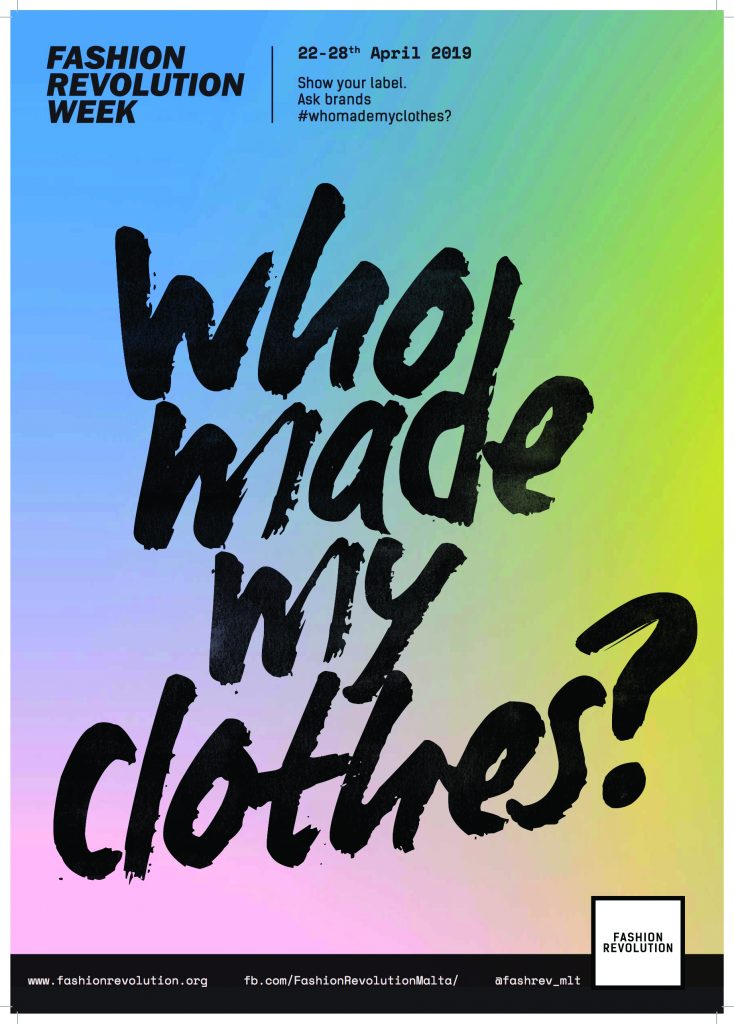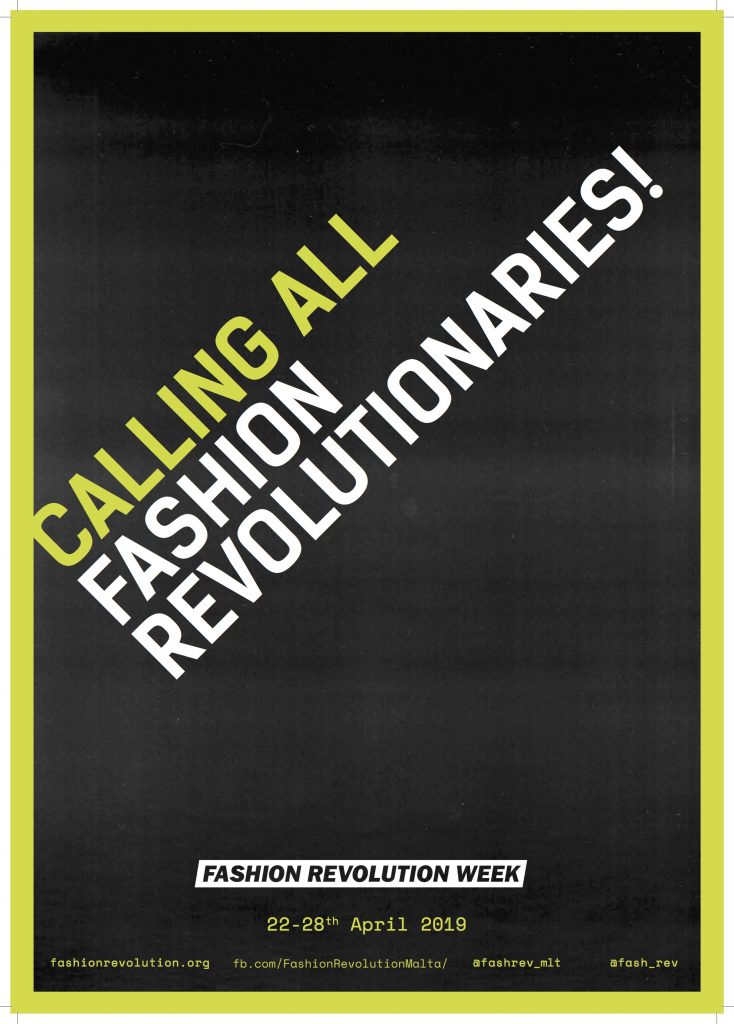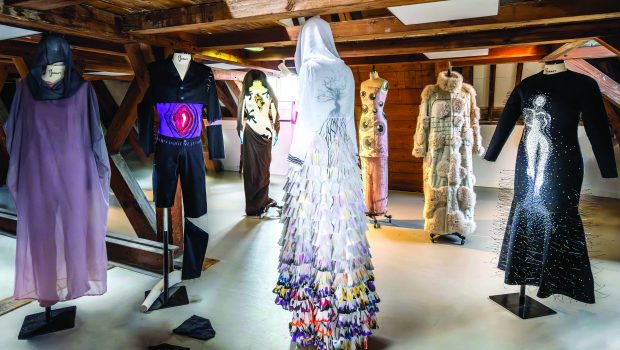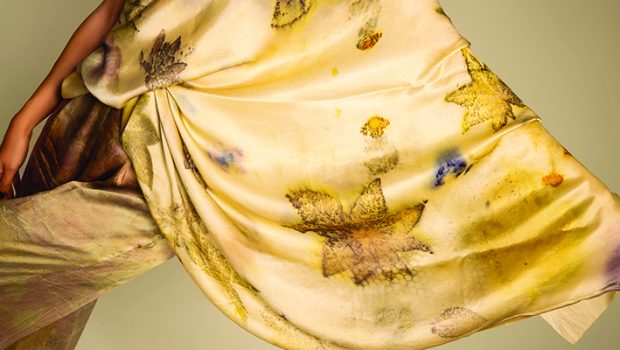A Sustainable Fashion Revolution
Tammy Fenech highlights ‘sustainable credibility’ in the fashion industry’s predictions and explains the message behind the Fashion Revolution. Will you join and ask #whomademyclothes?
Understanding our consumer power.
In the report ‘The State of Fashion 2018’ published by The Business of Fashion, predictions on the industry’s collective developments and trends for the year were announced. Amongst those predictions was the ‘Sustainability Credibility’ trend whereby it explains “sustainability will evolve to be an integral part of the planning system where circular economy principles are embedded throughout the value chain.”

I won’t go into detail about the circular economy; I will leave that for another time. On the whole, however it is safe to say that the forecast was indeed correct. 2018 proved to be the year that a wide range of fashion brands and companies of all sizes and segments collectively began to engage in more sustainable conversations, implement more action plans and commit to more sustainable strategies. Intidex, the company owning brands like Zara and Oysho, launched their Join Life initiative for example, creating collections that specifically focus on more sustainable ways of producing fashion. The Join Life collections essentially provide better material choices, safer processing and production methods and more.
Having studied and worked in the field of sustainable fashion for the last 6 years, I tend to totally nerd out on the subject. So you can imagine how exciting last year was for others in the field and myself. To finally see brands like Zara engage in and step up to the crucial sustainable fashion topics by creating awareness and making information available to the masses, is fantastic. Due to the very nature of the fast fashion model that brands like Zara work with, many may disagree with me. It is fundamentally disposable and wasteful, which to this I would agree – fashion should never be a disposable and value-less commodity. However, it is also evident that the easily accessible fashion industry of today’s world is not going away any time soon. On the contrary, it is actually becoming even more accessible than ever before, reaching wider audiences at much faster speeds. So if we consider this, I truly believe that the primary strategy needed to fill the sustainable fashion gap in the mass market, is to stand by the motto, ‘meet consumers where they are’ – which is at brands like Zara.

As exciting as last year was for us sustainable fashionistas, I believe it is important to acknowledge and understand the build up towards the ‘sustainable credibility’ trend. Like all other trends, it ultimately comes from nowhere. While the fashion industry-at-large is only just recognising the dire importance of sustainability within the industry, there have been groups of pioneers fighting this fight for well over a decade now.
One organisation that has been particularly successful in creating the right awareness and buzz around the issues is Fashion Revolution. Launching back in 2015, following the collapse of the Rana Plaza garment factory in Bangladesh, which killed nearly 2000 workers. With the aim to disrupt the current fashion industry and its working model, Fashion Revolution’s main call is to demand transparency from the industry, on social and environmental levels. Fashion Revolution has gathered a following of over 200k, with their impacts and out-reach rapidly increasing annually, clearly igniting a global movement that is here to stay.
In creating a unique and creative yet simple campaign that demands for transparency, Fashion Revolution primarily target consumers. Strategically planned to achieve their goals through the power of social media, the aim is to empower consumers to understand our potential influence on fashion brands and how we can affect the products produced through the choices we make. In other words, working with the simple supply and demand theory. If we as consumers demand it, they as producers will supply it. The Zara Join Life initiative is in fact the perfect example of this.
The main Fashion Revolution campaign message encourages consumers to ask one question: “Who Made My Clothes?” When asked this simple question however, it tends to be rather complex as its answer is more often than not, unknown. The simplicity, however, is enough to get consumers to think about the human hands behind the making of our t-shirts or dresses, and the journeys they went through to actually get into our wardrobes! When asking this question, firstly to ourselves and then, posing it onto our favourite brands, though the hash tag #WhoMadeMyClothes we, as consumers, are collectively able to put the right amount of pressure that demands brands to give answers –or at least begin working towards the answers. As a response the FR campaign also gives brands, producers, designers etc., the opportunity to reply to the question using the #IMadeYourClothes hash tag.
As a global movement the aim is to spread this message throughout the whole year, however it all culminates to one week in April – Fashion Revolution Week.
Marking the anniversary of the Rana Plaza collapse, the scope is to create a lot of awareness and put high amounts of pressure at one go. In 2018, I became the country coordinator for Fashion Revolution in Malta. This means that the movement has officially spread to our tiny Island. During the week of the 22nd and 28th April, we will be encouraging consumers and designers to participate in the social media campaign by asking the question #WhoMadeMyClothes and answering with #IMadeYourClothes. We will also be hosting a wide range of events in collaboration with many different partners, like a Repair Café with Levis Jeans, a documentary screening with Friends of the Earth and Kinemastik, as part of their Environmental film Club and more.
Our aim is to give consumers and designers the opportunity to be a part of the Fashion Revolution and to understand their power to help clean up the industry. While the Business of Fashion prediction manifested, the trend needs to move beyond just a trend and into the normal standard for the fashion industry. While our intention is to be able to make all fashion produced in the same way as the Zara Join Life collections, the most crucial part of the sustainable fashion message ultimately refers to understanding the true value and true cost of our clothing in order to stop treating them like a disposable commodity. This can only be done once we start asking questions like #WhoMadeMyClothes? A lot of power lies in the hands of the consumer, we want to help you find that power. Join us during Fashion Revolution week and be a part of the revolution!
*follow us to find out more









